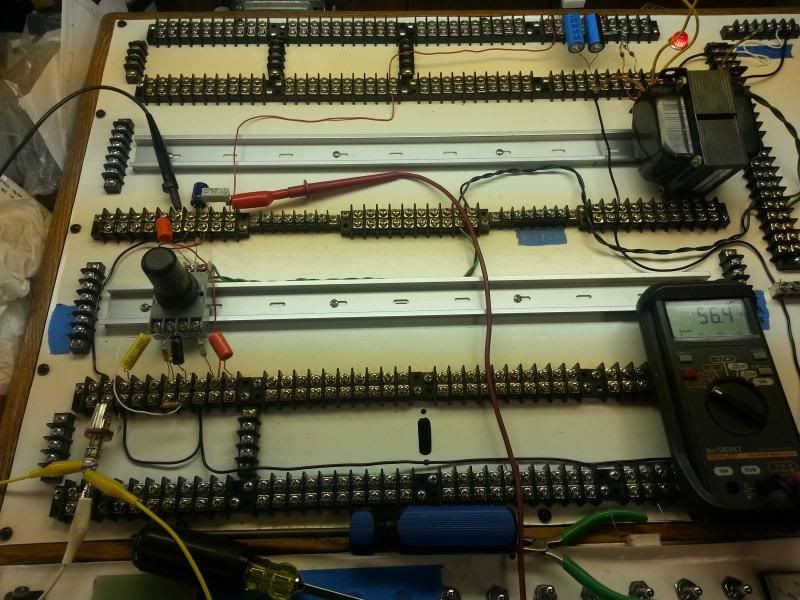OK, sulzer PI does work with the 6SJ7; kinda_sort_of... the phases are 180
o out as expected, however, the output level symmetry is WAaaaY off - about 1:3.2 - the screen output is MUCH hotter then the plate output.
built with the following components & values:
6SJ7 - NOS DuMont.
Ra = 220K
Rsg = 100K
Rgleak = 1M
Rk = 560R
Rtail = 22K
Cbyp = 47uF @ 63V
Cin .1uF @ 200V
Cc .022uF 400V
all measurements referenced to ground at idle and no input signal:
Line 110V
B+ ~ 335V
vk ~ 52V
va ~ 315V
vsg ~ 115V
vr-k ~ 1.31V
Vin is 1Vpk to CH1 of the scope (lower trace) CH1 is the triggering source for CH2.
Vout screen ~8Vpk
Vout anode ~2.5Vpk
anode output - using 10X probe 1V/div:

screen grid output - using 10X probe 2V/div:

as built:

perhaps what we are needing is a higher gm tube after all. i suspect the higher slope valve probably has a larger space charge for the plate to draw from so the outputs would have greater symmetry than what i'm observing with the 6SJ7. sulzer mentions in his article that the symmetry is tuned by adjustments to the anode resistor value and not the screen resistor value since altering the screen resistor changes the symmetry of both outputs. oh well...the road to hell...
as already noted, if this thing were the bee's knees, it'd be omnipresent, however, my thoughts are that it's someones experiment that has some merit in that it likely does work if built as published. my guess is it'd be a one_trick_pony at best. just for curiosities sake, i'll give it another round in the ring, but this time with the higher gm 6AU6, since i don't have any inventory of the 6AC7 part.
respectfully,
--pete
